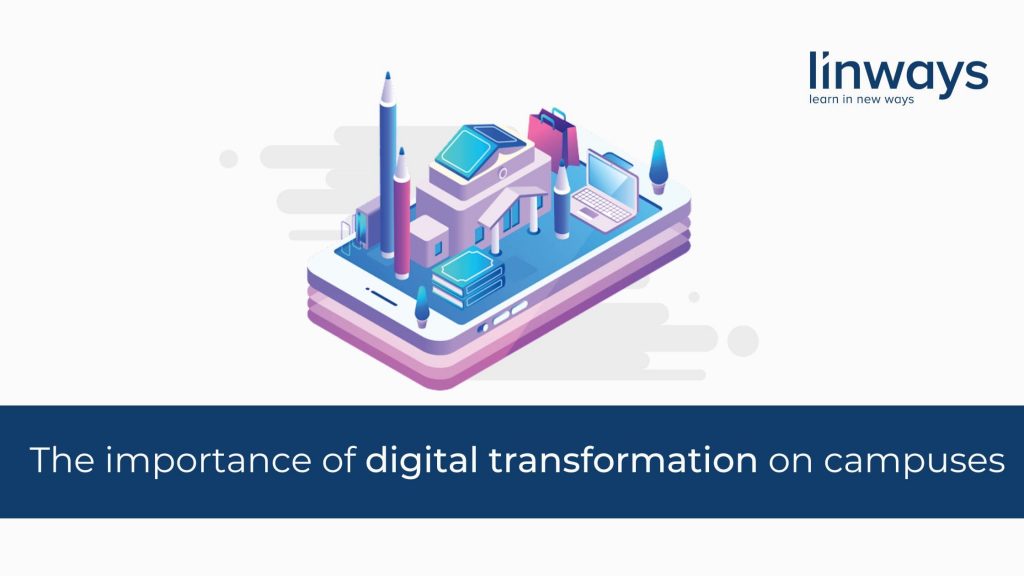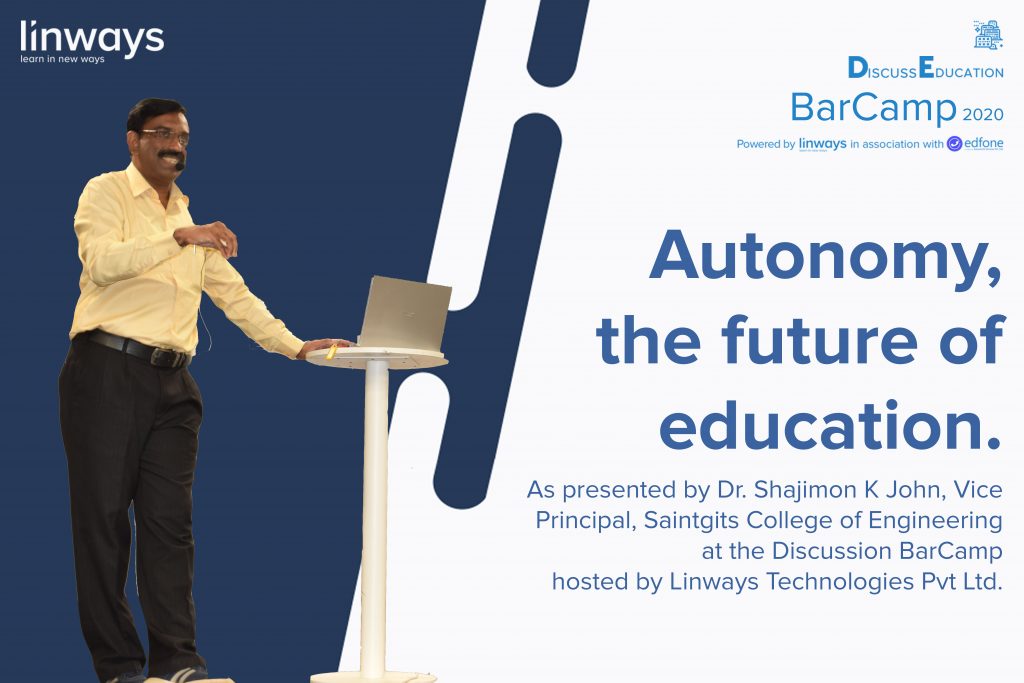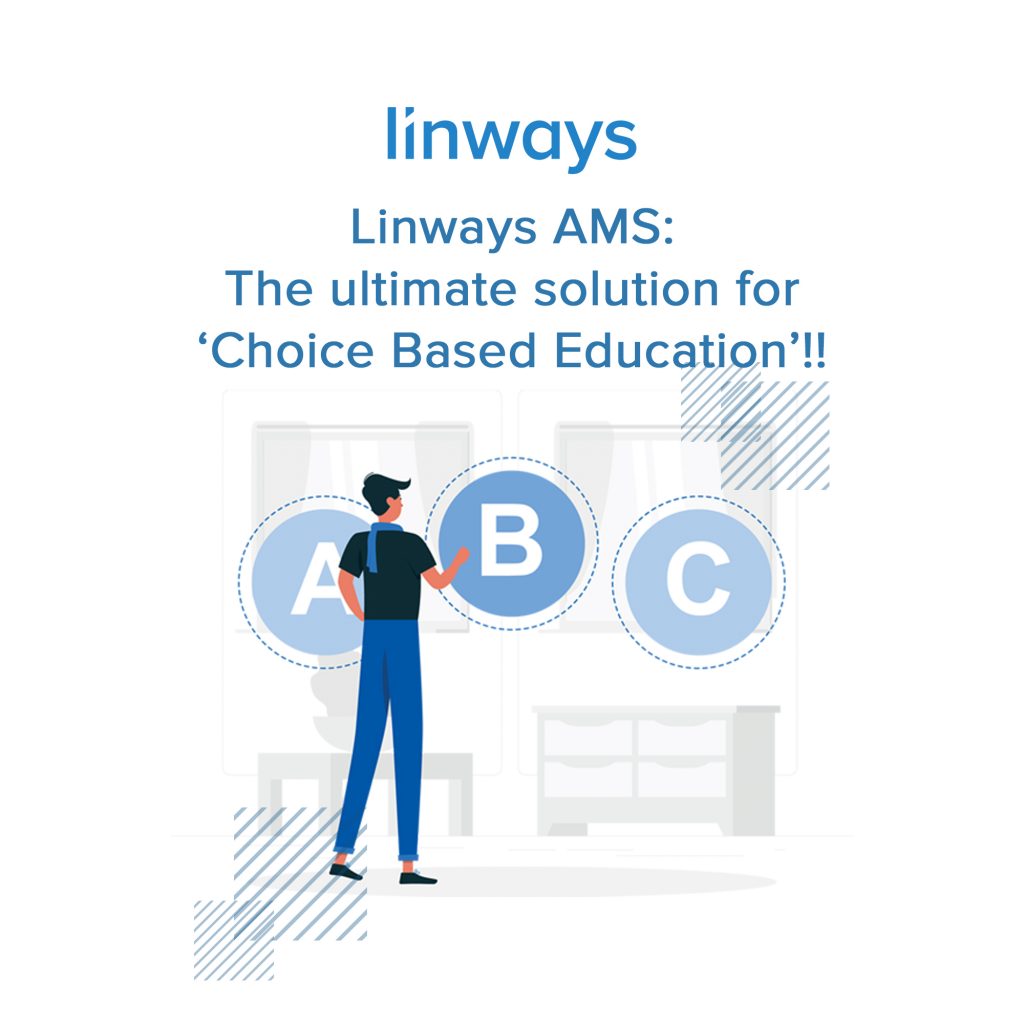What is Outcome Based Education(OBE)
This is an ultimate guide to Outcome Based Education where we explore different perspectives and implications of OBE, and it’s implementation. Before we begin to discuss an OBE framework, lets learn about the basics of OBE. For those of you who are not so familiar with the concept, Outcome Based Education is a learning paradigm that focuses on the outcomes or goals instead of results. The educators set a certain number of necessary skills and knowledge that the learner should possess at the end of education and they are identified as the outcomes. The assessments like exams, assignments, and projects are then defined to measure the achievement of these outcomes, and their results indicate whether the students has achieved them or not.
So, if the student has performed by the desirable standards in those assessments, their results, which are mapped to the outcomes, will let us know how proficient they are and how much they are learned. In the traditional methods, the end of education will be when the student has taken the exam and passed. But in OBE, the learner has to demonstrate that they have the desired skills and knowledge. If the student has failed to do so, then we take feedback to learn about what went wrong. Where do they need extra assistance and how should teachers help them to achieve the outcomes. Then we let them pass through the assessments again. This is called continuous evaluation, and it’s an important part of a successful implementation of OBE framework.
How OBE makes education better
There are several aspects of OBE framework that makes it preferable to educators and academicians over the traditional model. We will list out a few here.
- Learner centric
Outcome Based Education is purely learner centric and the whole experience of education rests on the ability of student to learn. According to OBE experts, not all students learn the same way and at the same pace. So instead of providing a standardised model, it accepts the diversity in the classroom and uses the element of continuous evaluation to make sure that the student does achieve the desired outcome at the end of education. - Clarity and focus
Since the outcomes are defined earlier, students and teachers can act and strategize well to achieve the end goals or outcomes. There is always a specific skill or knowledge to be demonstrated instead of just getting enough marks, which will help shift the focus from assessments to learning. - Opportunity
Students will have multiple opportunities to achieve the outcomes. Marks are mere indicators of the outcomes and the learner can express in their own way removing the element of stress from education.
How to implement an OBE framework in your institution
Implementing Outcome Based Education needs research and background study about your institution and the curriculum. Then again, each process can be different from what others have done since you need to address the uniqueness and requirements of your institution. We will draw out some steps involved in successful implementation of an OBE framework in your institution.
- Assessment of curriculum and needs
Before you begin, collect data about the curriculum, current standards of the institution, stakeholder feedback, and define what your requirements are for implementing OBE in your institution. This will help you later to devise strategies, define outcomes, and measure their achievement. - Defining outcomes
The next step is to define the outcomes. From the requirements that you have collected from stakeholders and needs of the institution, define the goals and skills you want the students to achieve. There can be some major outcomes that will be measured over longer terms and some shorter outcomes that will help you measure their achievement rate in short terms so that you can improve and alter the teaching-learning methods along the way is needed. We will discuss more of this while talking about the accreditation workflows. - Collaboration
Effective communications between the stakeholders and decision makers in very important for the success of OBE. Let every departments, parents, students, industry experts, and key decision makers have a say in each step. This will help you bring clarity to the process and assure success in implementing OBE. - Mapping outcomes with subsets
Once you have defined the outcomes, draw out the correlation between major outcomes and short-term goals. If your desired outcome is for the student to express environment conservation mentality, you can define a short-term goal which measures the times during which the student has participated in any such activities during the course. - Defining contributions from assessments and results
Now you have your outcomes. The next step is to define the contributions from assessments like exams, assignments, projects etc. Document and map the extent of achievement by the assessment results. This means measuring the attainment of an outcome by how well the students has performed in an assessment measuring that outcome. - Feedback and continuous evaluation
As we said earlier, continuous evaluation is an important aspect of OBE. you have to collect feedback and improve on every step of the way to assure that the students are able to achieve the outcomes. Also make necessary edits and alteration to your plans if the results indicate otherwise.
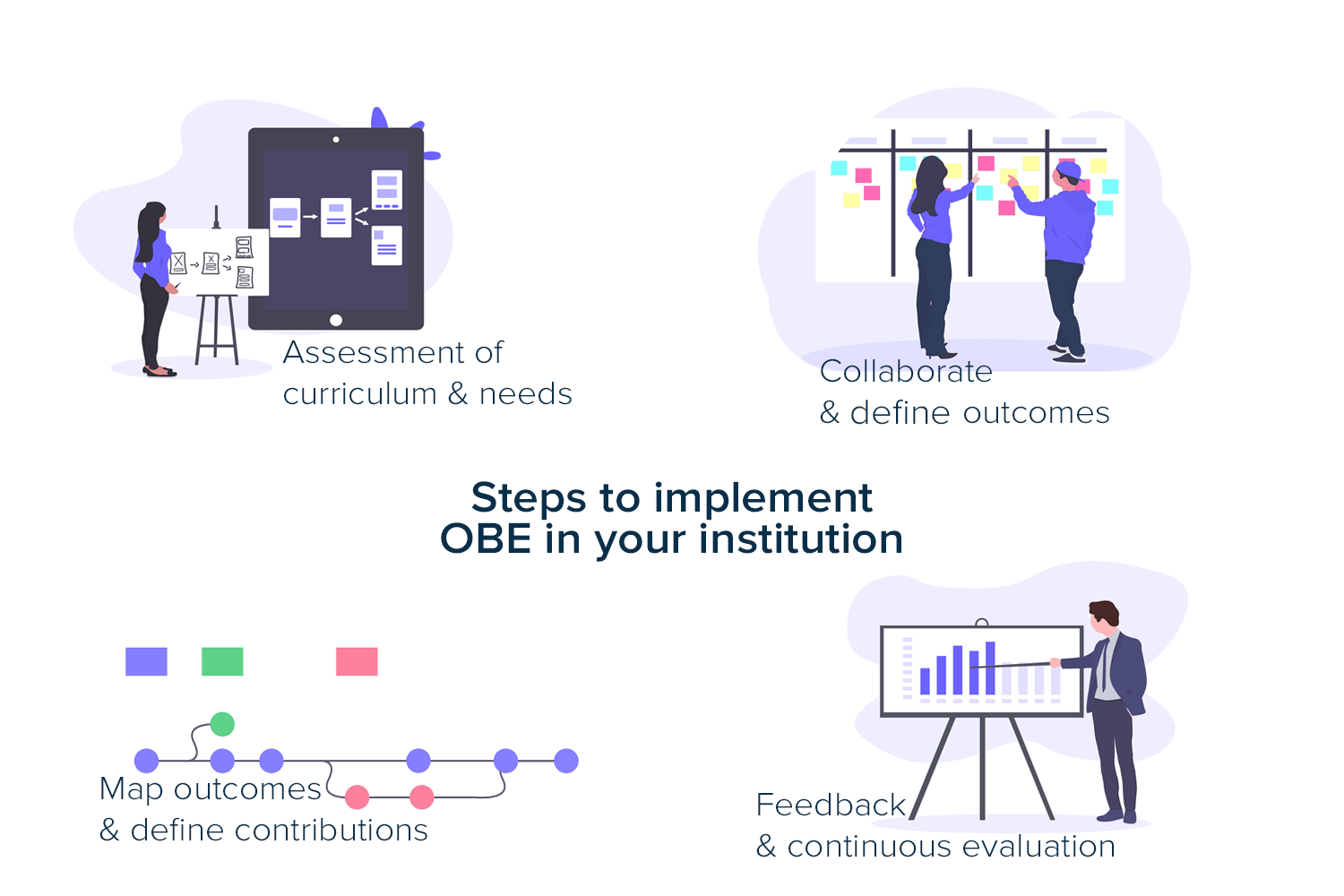
How do we deal with OBE today
We curated the info in this ultimate guide to OBE from a wide range of sources, including teachers, institutions, and from whatever data that’s available on the public domains. India has become a member of the Washington Accords since 13th June 2014. This accord will improve the education standards and raise quality to a level by which our students can compete and perform with the global standards from around the world. The signatory body of India is the National Board of Accreditation (NBA). The NBA accredits professional programs in higher educational institutions to assure quality and provide guarantee that they sustain a certain standards in the education they provide. The NBA follows the OBE model of education by establishing Course Outcomes (COs), Program Outcomes (POs) and measuring their achievements over academic years to assess quality and measure standards of the programs.
Similarly, the National Assessment and Accreditation Council (NAAC) follows OBE style too. But instead of professional programs, the NAAC accredits higher educational institutions across India. There are definitely more to these accreditation than just OBE, and there are detailed workflows and processes for these.
There are some things…
This brings out the importance of continuous evaluation. Every time we take a few steps, we need to take a moment to stand still and assert what we have achieved, and what we need. This gives room for improvisations and quality improvements, which are essential in education. To have a general idea about this technique helps you to build a more clear perspective about our educational sector. There are several private and government organizations and panels that work to fulfill this dream of developing effective course-designing mechanisms based on these theories like:
ABET, accredits college and university programs in the field of applied science, computing, engineering, and engineering technology at the bachelor, associate, and master degree levels. With ABET accreditation, students, employers, can be confident that a program meets the quality standards that produce graduates who are accepted globally.
The Washington accord is an international agreement between different bodies that accredits the engineering and other technical undergrad programs. Their main objective is to recognize and facilitate the standardization of professional courses which is accredited by its member bodies. The WA has 17 member bodies representing their respective countries along with 7 provisional members who may become permanent members. India has become a signatory member of this accord on 13th June 2014.
How to implement Outcome Based Education (OBE) using Linways AMS
How can institutions simplify and streamline OBE workflow
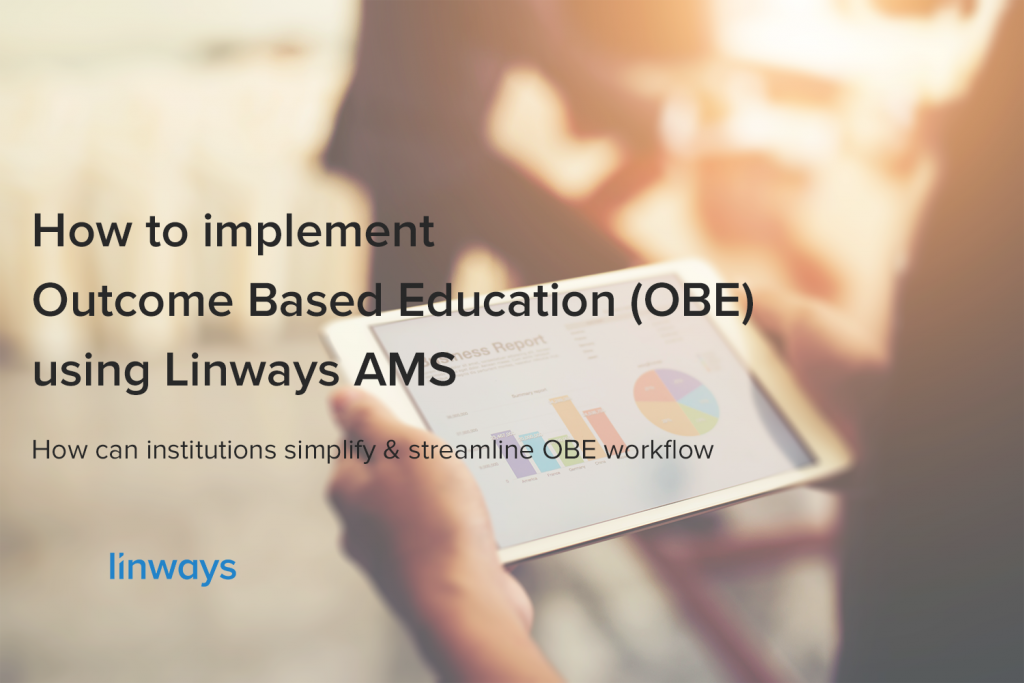
Note: We have previously written a couple of blogs about Outcome Based Education. So if you want to know more about the details, you are welcome to check it out here. Moving on, we shall discuss how our Linways Academic Management System helps higher educational institutions to successfully implement and manage OBE.
We have been perfecting our OBE module in Linways AMS for quite some
time now, and now we have a fully fledged platform that helps
institutions and teachers to define outcomes, map assessments, implement
course correction practices, and track achievement of the outcomes.
Since most accreditation and regulatory bodies prefer OBE to assess
the quality standard of institutions, there is huge demand for OBE
platforms among higher educational institutions. To cater to this huge
demand and streamline complex workflows, we’ve built both NBA and NAAC related OBE modules.
We will go over the platform step by step to help you understand why
Linways AMS is such a success among institutions that goes for NBA and
NAAC accreditation.
OBE workflow in Linways AMS
There are multiple workflows for implementing OBE. With Linways AMS,
the whole process begins with the institution setting the vision and
mission. The vision is an ideal somewhere which the college wants to
reach in it’s journey. Somewhere towards all the efforts and actions are
pointed at. The mission is a statement that defines its actions. The
‘how’ institution chose to reach that ideal place in the vision.
The next step is to define and set the Program Outcomes (PO).
A program Outcome is something that the graduates is supposed to have
after completing their degree. So the institution convenes an expert
committee that consist of HoDs, Deans, etc. to define the POs. Linways
AMS help set these POs through the admin account.
Once we set the POs, then we move on to the Course Outcomes (CO). They are the subject-level objectives that the students should be able to achieve in order to attain the POs. The COs are then mapped to their respective POs. Mapping of COs to POs is one of the most important steps in implementing OBE. So if a particular student is achieving any of the COs, the faculty can assess his/her performance as in if they will be able to achieve the respective POs in the long run or not.
Various assessment tools are used to evaluate the attainment of these
COs. Some of the common assessment tools include exams, survey, field
work etc. To make this process smoother, Linways has a well designed
assessment functions. Teachers can themselves add assessment metrics
into the system, create a question bank, and collaborate across
departments with Linways. Then while creating the question papers or
evaluation guidelines, teachers only have to simply select the questions
from the previously created question bank or template. While doing so,
the teacher can also select and map those assessments with various COs
to which each question contributes.
This way, Linways AMS ensures that there are sufficient relationship
between the desired outcomes and the assessments. Every assessment is an
evaluation of the attainment of the outcomes. On every step of the way,
the teacher can immediately evaluate the status and performance of the
student based on their outcome achievement data.
To top it off, our detailed graphical representation of all these data helps the management to get a hold of everything with a single click. The stakeholders can get their reports on Outcome Based Education and, in turn, accreditation reports right away with ease. Since the data is regularly updated into the system, the teachers don’t have to painstakingly pull up data from old files, organize them over excel, calculate their values and finally print out the final results. Linways AMS does all these for them. We also support a mission to make our campuses paperless as a green environment initiative. So besides having the data at their fingertips, the faculty or stakeholders and also share these reports with their higher authorities for better collaboration and greater insights.
Also published on Medium.


